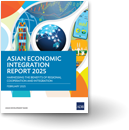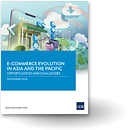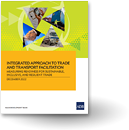Antidumping measures and the People’s Republic of China
The People’s Republic of China (PRC) has achieved many firsts since its economic transformation in the late 1970s. Not all however are the envy of the world. One which the country could do without is its status as the world’s most targeted antidumping nation. It seems being the world’s largest exporting country has some unintended consequences. New estimates1 in fact show that export volume has a big impact on antidumping actions—as much 10 times larger than previous estimates.
Many empirical studies have found a positive association between export volume and the frequency of antidumping actions. That is the larger the volume of exports of a country, the greater the antidumping petitions filed against the country. Other factors may also determine antidumping actions such as the conditions of a complainant country—its growth rate, unemployment rate, exchange rate levels, as well as a tit-for-tat action.
The perennial problem of reverse causality that is present in earlier empirical studies—exports affect antidumping actions, and antidumping actions can also affect exports—means these conventional estimates are likely to be misleading. This problem, more generally known as endogeneity, is not only a methodological concern; it is also of great practical importance.
Antidumping measures tend to contribute to trade diversion and trade destruction. While they harm the targeted exporters, they tend to have little benefit to domestic firms and consumers. If the true estimate of antidumping measures is larger than the conventional estimate, this means the trade destruction and trade diversion effects would actually be greater.
In order to address the endogeneity problem, we need to find proxies or instruments for export volume. The instruments should be strongly associated with export volume but not determined or affected by antidumping measures. As part of the World Bank’s Doing Business Project on Trading Across Borders, we identify three trade cost variables namely, documents required to import, time taken to import, and container cost to import that can instrument for export volume. In this case, we expect the higher the trade costs, the lower the exports.
We collect the antidumping petition data from 2006 to 2010 at the Harmonized System Code 8-digit level from the Global Antidumping Database. These are petitions filed by the PRC’s major trading partners against the country, which comprise 29 countries, 16 of which are in the European Union. These 29 economies account for more than 50 percent of the PRC’s total export volume and 92 percent of the total AD petitions filed against the PRC.
Two-stage least squares are then used to estimate the relationship of interest that is between antidumping petitions as the dependent variable, and the export volume as the main independent variable of interest.2 Other controls which may affect antidumping petitions are also included.
We find rising exports from the PRC lead to rising antidumping petitions against the country. Instrumental variable estimates indicate that a one percentage point rise in the PRC’s export volume raises the number of antidumping petitions against the country by about 0.3 percentage points, and the probability of receiving antidumping petitions by 3.6 percent. These estimates are about 10 times larger than those found in ordinary least square regressions.
These results are also robust to several modifications. For example, instead of using the export volume sourced from exporting countries, we use the import volume from importing countries. Also, we include other explanatory variables which may affect antidumping petitions namely exchange rate levels, and tit-for-tat antidumping action.
These results point to a key policy implication. Since it is the exporting country that faces antidumping petitions, it is the exporting country that will be particularly disadvantaged by the inadequacy of the current trade statistics that fail to properly account for the prevalence of production fragmentations in international trade.
In such an environment, it is the exporting country of final goods that is landed with the antidumping petitions even when various components of the final products—often higher value-added ones—are made in many other countries. The PRC stands out being the factory of the world, where half of its manufacturing exports are produced by processing plants that assemble imported parts and components into ?nal goods for export.




